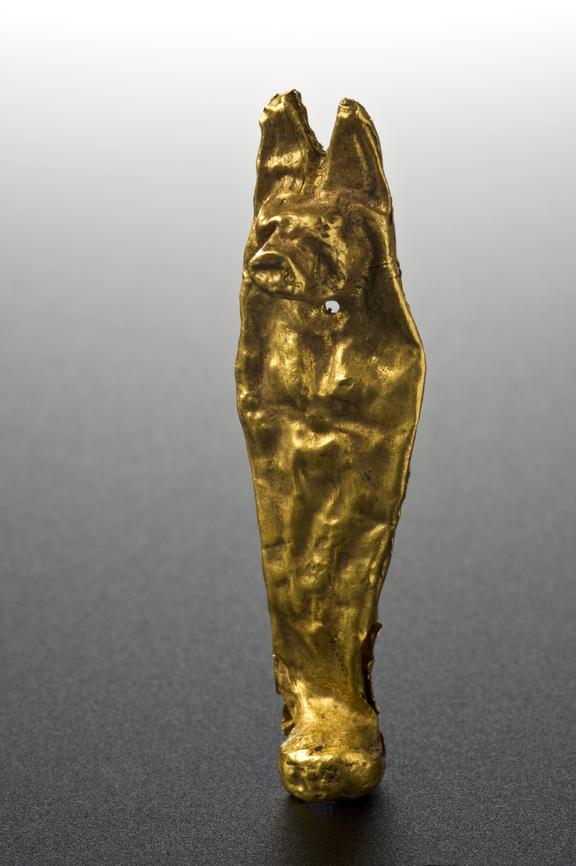

Gold amulet in the form of Duamutef, Egypt, 2000-100 BCE
- Made:
- 2000-100 BCE in Egypt

Gold amulet, hollow and in the form of Tuamutef, Egyptian
Amulets are believed to protect the wearer from evil and illness or bring good fortune. In Egypt, the jackal-headed Duamutef or Tuamutef was one of the four sons of Horus. These were said to look after the different parts of the body when they had been removed and stored in canopic jars as part of the process of mummification. Tuamutef was the guardian of the stomach.
This object was bought at auction in July 1930 by Henry Wellcome himself. It was unusual for Wellcome to bid for items at auction as he normally tried to keep his interests secret.
Details
- Category:
- Classical & Medieval Medicine
- Collection:
- Sir Henry Wellcome's Museum Collection
- Object Number:
- A6566
- Materials:
- gold
- Measurements:
-
overall: 52 mm x 15 mm x 6 mm, .002 kg
- type:
- amulet
- credit:
- On loan from the Wellcome Trust


